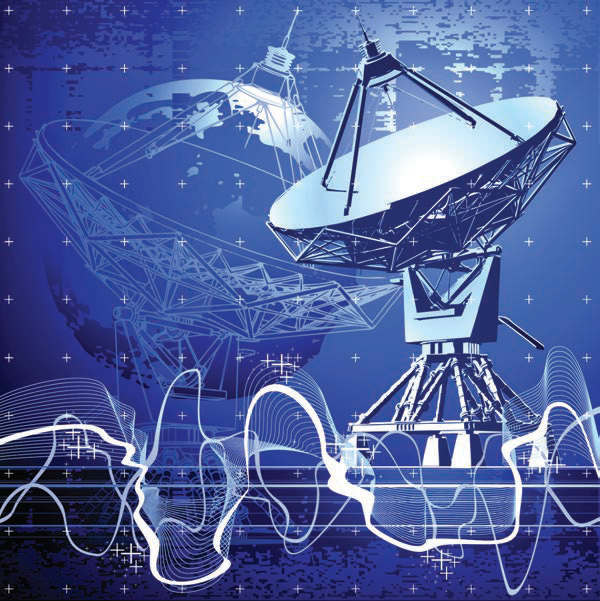Satellite communication (SATCOM) has become an integral part of our interconnected world, supporting everything from global telecommunications to weather monitoring and military operations. The success of satellite missions relies heavily on ground services that facilitate communication between Earth and space.

In recent years, Software Defined Radios (SDRs) have emerged as a game-changing technology, introducing unprecedented flexibility and advanced capabilities to ground services. This article explores in detail the multifaceted impact of SDRs on satellite communication, with a focus on their adaptive tuning range, dynamic RF bandwidth, concurrent multi-channel operation, and the game-changing full-duplex capability.
Understanding Software Defined Radios
At its core, an SDR is a radio communication system where some or all of the typical signal processing functions are implemented in software. Unlike traditional radios, which rely on fixed hardware components for processing and modulation, SDRs leverage software to handle these tasks. This flexibility empowers ground services to adapt and evolve without the need for extensive hardware modifications.
Tuning Range: Adapting Across the Spectrum
The tuning range of an SDR is perhaps its most distinguishing feature. Traditional radios are bound by their fixed-frequency components, limiting their ability to adapt to different frequency bands. SDRs, on the other hand, offer an extensive tuning range, allowing seamless transitions across a spectrum of frequencies. This adaptability is particularly valuable in satellite communication, where different satellite systems may operate in different frequency bands.
With SDRs, ground services can effortlessly switch between frequency ranges, ensuring optimal performance without the need for costly hardware redesigns.
RF Bandwidth: Dynamic Optimization for Varied Demands
One of the inherent challenges in traditional ground services is the fixed nature of RF bandwidth. SDRs overcome this limitation by enabling dynamic adjustments to the RF bandwidth. This dynamic optimization ensures that ground services can tailor their communication systems to accommodate varying data rates and communication requirements. Whether it’s handling high- throughput data or conserving bandwidth during periods of lower activity, SDRs provide the agility needed to address diverse communication scenarios. This adaptability is crucial in the ever-changing landscape of satellite communication, where mission requirements can vary significantly.
Number of Channels: Multiplying Connectivity Options
The ability to handle multiple channels concurrently is a hallmark of SDR technology. Ground services utilizing SDRs can harness the power of multiple channels, enabling simultaneous communication pathways. This capability is particularly advantageous in scenarios involving satellite constellations, where interconnected satellites rely on efficient channel management for seamless coordination. SDRs not only multiply connectivity options but also facilitate the implementation of complex communication architectures. Whether it’s managing diverse data streams or supporting a network of interconnected satellites, the multi-channel support of SDRs enhances the overall robustness and scalability of ground services.
Full Duplex Operation: Real-Time Interaction and Reduced Latency
Full duplex operation is a standout feature of SDRs that elevates the reliability of ground services. Unlike traditional radios, which often require separate frequencies for transmission and reception, SDRs enable simultaneous two- way communication which can be on the same or different frequencies. This capability fosters real-time interaction with minimized latency, making it ideal for mission-critical scenarios. In operations such as command and control, where timely communication is paramount, SDRs ensure that ground services can execute seamless two-way communication. The reduced latency contributes to the overall success of missions that demand swift decision-making and control.
Advanced Capabilities of Software Defined Radios
Beyond their foundational features, SDRs boast advanced capabilities that further enhance their utility in ground services.
Frequency Hopping: Enhanced Security and Interference Mitigation SDRs can employ frequency hopping techniques, a method where the radio rapidly changes its operating frequency during communication. This capability enhances security by making it challenging for unauthorized parties to intercept or jam transmissions. In military applications, frequency hopping is particularly crucial to maintaining secure and reliable communication in the presence of potential adversaries.
Adaptive Modulation Schemes: Optimizing Data Transfer Rates
SDRs allow for the implementation of adaptive modulation schemes, where the modulation method can be dynamically adjusted based on channel conditions. This adaptability optimizes data transfer rates by selecting the most suitable modulation scheme for the prevailing conditions. In scenarios where the quality of the communication channel fluctuates, adaptive modulation ensures efficient use of available bandwidth, maximizing the reliability of data transmission.

The features of SDRs such as Cyan can better the performance
of ground services.
Signal Processing Capabilities: Real-Time Signal Enhancement
The signal processing capabilities of SDRs extend beyond basic modulation and demodulation. With powerful processors and sophisticated algorithms, SDRs can perform real-time signal enhancement. This includes tasks such as error correction, interference suppression, and signal equalization. The result is improved signal quality and increased resilience to challenging communication environments.
Remote Upgradability: Future-Proofing Ground Services
One of the unique advantages of SDRs is their remote upgradability. Traditional radios often require physical hardware upgrades to incorporate new features or address emerging challenges. SDRs, however, can receive software updates remotely, allowing ground services to stay current with the latest advancements without the need for costly and time-consuming hardware replacements. This future-proofing aspect ensures that ground services can adapt to evolving technological landscapes and mission requirements seamlessly.
Case Studies:
Real-World Applications of SDRs in Ground Services
To illustrate the real-world impact of SDRs on ground services, let’s explore a few case studies across different sectors of satellite communication.
Earth Observation Missions
In Earth observation missions, satellites equipped with high-resolution imaging sensors capture vast amounts of data. The dynamic tuning range of SDRs allows ground services to optimize communication with these satellites, adapting to the specific frequency bands used by different sensors. The multi- channel support enables efficient data downlink, while the full duplex operation ensures timely receipt of commands and updates.
Satellite Constellations
The deployment of satellite constellations, comprising multiple interconnected satellites working collaboratively, is a burgeoning trend. SDRs play a pivotal role in managing the complex communication requirements of these constellations. The ability to handle multiple channels concurrently ensures seamless coordination, while the adaptive RF bandwidth adjustment optimizes spectrum utilization. The remote upgradability of SDRs also proves invaluable in maintaining and enhancing the functionality of satellite constellations over time.
Military and Defense Applications
In military and defense applications, secure and reliable communication is of paramount importance. SDRs, with their frequency hopping capabilities, enhance the security of communication channels. The adaptive modulation schemes and signal processing capabilities further contribute to maintaining communication integrity in challenging environments. The remote upgradability of SDRs allows for swift integration of new encryption protocols and other security measures.
Conclusion: Paving the Way for Future Innovations
In conclusion, Software Defined Radios have emerged as the cornerstone of innovation in satellite communication ground services. Their adaptability, advanced capabilities, and real-world applications make them indispensable in a landscape characterized by evolving technologies and mission requirements.
As we venture further into the future of satellite communication, SDRs will continue to play a pivotal role in shaping the success of ground services. Their ability to seamlessly adapt to different frequency bands, optimize RF bandwidth dynamically, handle multiple channels concurrently, and facilitate real-time, two-way communication positions them at the forefront of technological advancements. The flexibility and versatility of SDRs empower ground services to navigate the complexities of satellite communication with unparalleled efficiency, ensuring the continued success of missions that push the boundaries of exploration and connectivity.
www.pervices.com

Author Brandon Malatest
Per Vices, a leader in software defined radios, offering the highest channel count and highest bandwidth SDRs for the satellite ground station market. The high performance radios with exceptional signal processing capabilities, and advanced hardware features enables customers to leverage Per Vices SDRs to achieve superior performance, enhanced flexibility, and future-proof solutions. Contact solutions@pervices.com to learn more about the different options.



